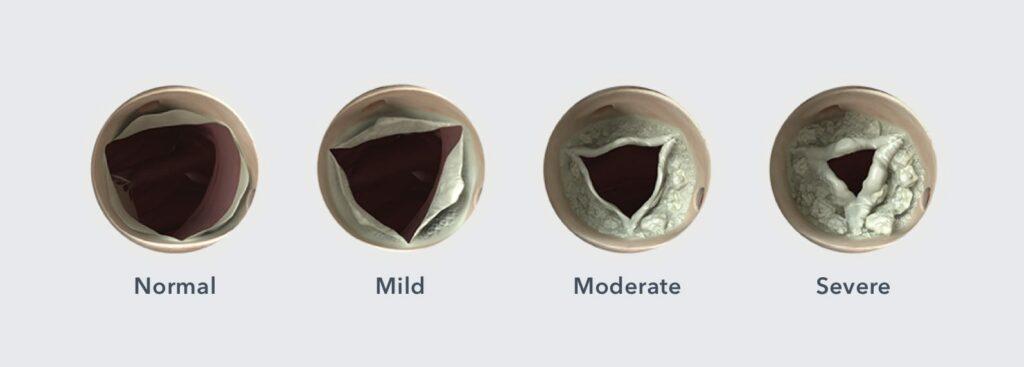What is Aortic Stenosis?
Aortic stenosis is one of the most common and most serious valve disease problems1.
It is estimated that 1 in 8 elderly Australians has Aortic Stenosis2. Up to 50% of people who develop severe Aortic Stenosis symptoms will die within an average of two years3 if they do not have their aortic valve replaced.
Aortic stenosis is defined as a narrowing of the aortic valve opening. Aortic stenosis restricts the blood flow from the left ventricle to the aorta and may also affect the pressure in the left atrium4.
Aortic stenosis is an acquired or congenital condition that is caused “because of scarring and calcification of the leaflets” says Dr Alexander Incani, Interventional Cardiologist. Watch the video below to hear more about the pathophysiology of aortic stenosis.
Pathophysiology
Aortic Stenosis is the increased pressure load imposed by aortic stenosis results in compensatory hypertrophy of the left ventricle (LV). With time, the ventricle can no longer compensate, causing secondary LV cavity enlargement, reduced ejection fraction (EF) and decreased cardiac output. The result is an increase in exertional syncope, exertional angina and breathlessness over time5.

The severity of aortic stenosis is determined by the calcification of the aortic valve leaflets
The Size of the Problem
“Aortic stenosis is underdiagnosed and under-recognised throughout the world,” Interventional Cardiologist, Associate Professor Martin Ng comments on how serious this condition is to our community. “Most people with the disease are not being picked up, and only a very minority of patients are receiving treatment.” Watch the video below to find out the percentage of people with severe aortic stenosis who aren’t receiving treatment.
The Impact of Undiagnosed Aortic Stenosis
Trials have demonstrated the seriousness of untreated aortic stenosis, suggesting that “untreated severe aortic stenosis can have a higher mortality rate compared to most common cancers.” The impact of undiagnosed aortic stenosis can have a significant effect on the healthcare system. Interventional Cardiologist, Dr Ronen Gurvitch explains further in the video below.
Are the Treatment Options of Aortic Stenosis Well Understood?
Cardiothoracic Surgeon, Professor Michael Vallely discusses the significant growth cardiac surgery had over the last 20 years and the misconceptions it still faces about patient safety and its effectiveness. “We’ve got a lot of work to do to raise the awareness of the disease, but also raise the awareness of how available therapy is and how relatively safe and effective the therapy is.”
Learn about the symptoms of aortic stenosis here.
Patient Disclaimer: All content on the Hope For Hearts site is created and published online for general information purposes only. It is not intended to be a substitute for professional medical advice and should not be relied on as health or personal advice. Please see your doctor if you have any questions or concerns.
Reference
- American Heart Association
- J AM Coll Cardiol 2013- Sept 10;62 (11) 1002-12 Osnabrugge RL
- Otto, C. VALVE DISEASE: Timing of aortic valve surgery. Heart. 2000;84(2):211-218.
- American Heart Association
- MSD Manual
